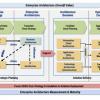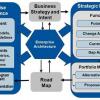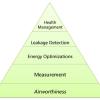Business Transformation Requires Transformational Leaders
Leadership and teaming skills are front and center in times of rapid change. Meet today’s constant disruption head on with expert guidance in leadership, business strategy, transformation, and innovation. Whether the disruption du jour is a digitally-driven upending of traditional business models, the pandemic-driven end to business as usual, or the change-driven challenge of staffing that meets your transformation plans—you’ll be prepared with cutting edge techniques and expert knowledge that enable strategic leadership.
Recently Published
We observe from digital transformation in the real world that EA as a discipline has the responsibility to facilitate changing the mindset or culture of the enterprise.
The Adoption of Disruptive Technologies
During the first two quarters of 2016, Cutter Consortium conducted a survey that focused on the methods, tools, and techniques surrounding business adoption of disruptive technologies. We collected data across multiple industries and countries, but primarily from the US. There were just about as many business professionals as technology professionals who responded to the survey. The purpose of the survey was to understand how companies identify, pilot, and deploy specific emerging or disruptive technologies.
Of all the scrum roles, the scrum master seems to be the hardest one to grasp in large organizations.
Agile Management, Part II: Practices
A good mental model of your ideal organization is that of a well-designed system: one that is efficient, responsive, and serves its purpose well. An organization is a system comprising staff and technology. Good systems design is about balance. This Executive Update, Part II of a two-part series on Agile management, discusses balance in relation to collaboration and empowerment.
EA, as a formalized practice, is less than 20 years old. As with any profession or practice, there are many definitions, perspectives, and schools of thought surrounding EA. Here in Part II of this three-part series, we address a shared goal among enterprise architects to evolve the practice from a fragmented, often poorly understood field to a “real profession,” on par with well-established professions such as accounting and engineering.
This Executive Update provides a high-level description of EA, what it can do for an organization, and how EA can (and should) play a critical role in alignment efforts. We present insight into what enterprise architects do, what kinds of skills they need, and what results and benefits an organization should expect from their EA efforts.
Understanding individuals and how they interact with each other is one of the key priorities of Agile.
Our vision strives for a software-driven approach that improves drones' energy consumption by establishing practices, tools, and metrics for developing and evaluating energy performance at the system level. With this knowledge, we can outline ways to utilize software solutions to measure and optimize drones' energy consumption and critically improve their flight autonomy.
The most common problem we see in RFPs for cloud services is the reuse of tendering materials that were designed for the outright purchase of physical objects. Problems that arise include buyers being unnecessarily specific in the definition of their requirements, buyers trying to impose what they would do in their small data center to an exascale cloud provider servicing thousands of diverse clients, and many others. The best way to spot these problematic approaches is by way of analogy.

















